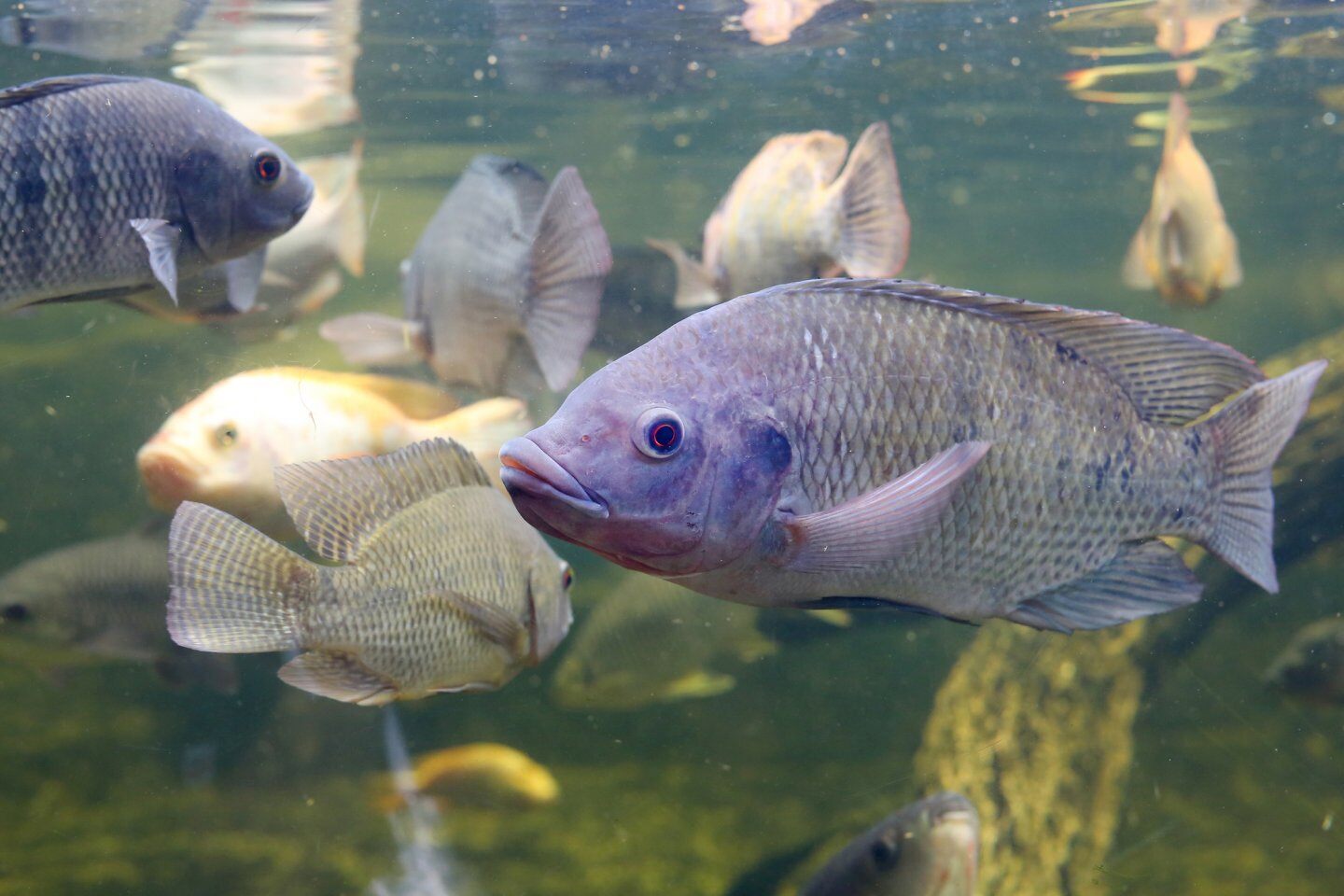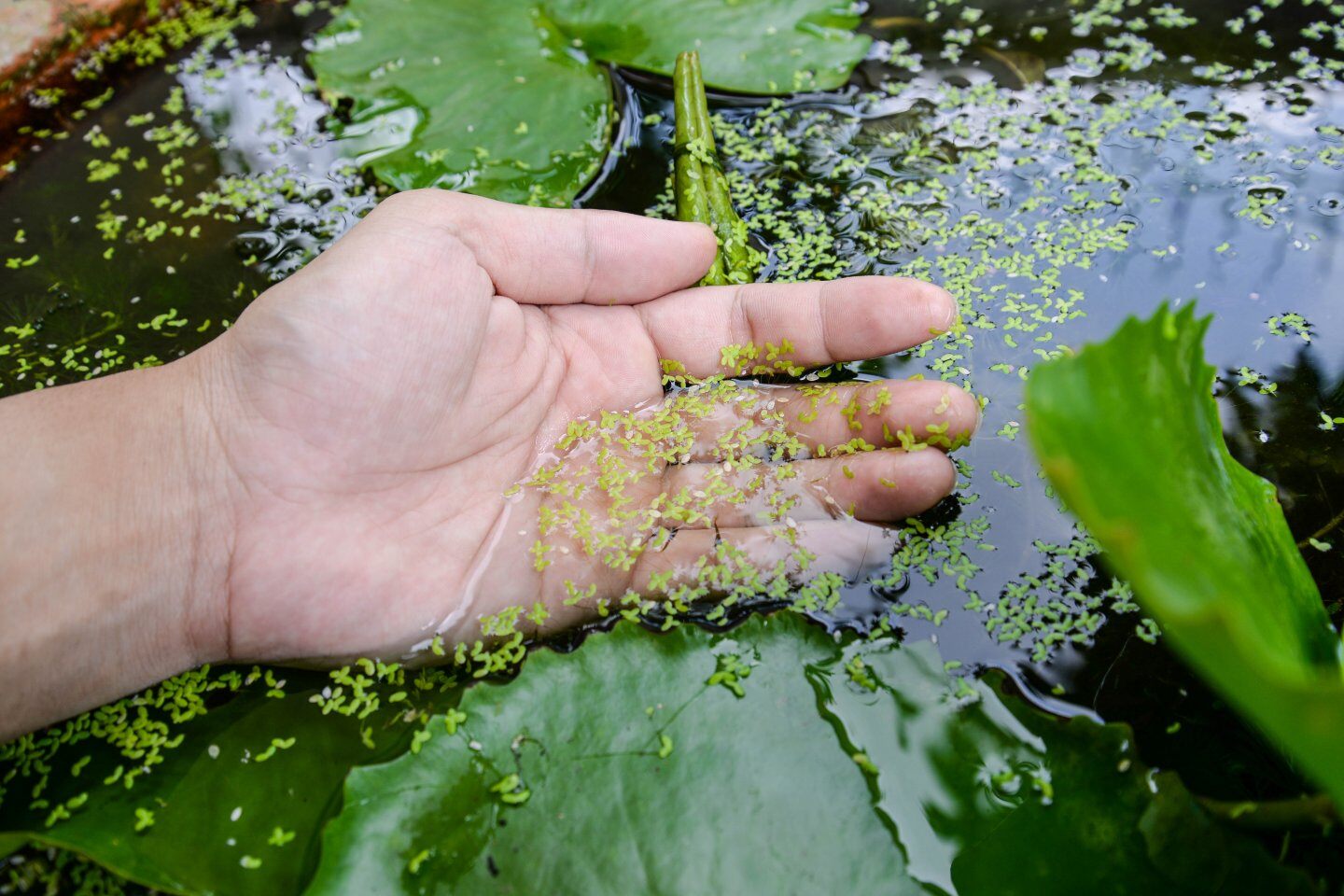Request a Free Estimate
We don't just manage your pond or lake; we transform it into a beautiful, thriving ecosystem. It's what we love to do.

When it comes to controlling unwanted aquatic vegetation, the best strategies go beyond quick fixes—they focus on long-term balance. At Jones Lake Management, we take a science-based, integrated approach to managing algae and aquatic weeds, and one of the most natural tools in our seasonal toolbox is the tilapia.
These warmwater fish are stocked in the late spring and provide biological control throughout the growing season by consuming nuisance vegetation like filamentous algae, duckweed, and chara. While tilapia won’t survive Midwest winters, their short-term presence can make a big impact—reducing weed growth, supporting clearer water, and helping minimize the need for chemical treatments during peak growing months.


Our team of biologists employs herbicides and algaecides in our annual aquatic weed and algae control programs, but we use them as part of an integrated management approach. We must emphasize that relying solely on these chemicals isn’t always enough to keep the pond healthy. Adding beneficial bacteria and installing an aeration system are two obvious ways to improve the health of your water and limit nuisance vegetation. Several years ago, our senior staff biologists pushed to stock tilapia at our farm to see if the reports of tilapia aiding in the control of duckweed and filamentous algae in ponds and lakes were accurate. Tilapia are herbivorous fish native to Africa, feeding primarily on plankton, algae and aquatic weeds. They’re an extremely important aquaculture species because they have a mild flavor and grow quickly – as a result, they are a common menu fixture in restaurants. Their popularity in aquaculture has led to several studies measuring their effect on cyanobacteria in a pond. These studies show that the filter-feeding behavior of tilapia can result in significant cyanobacteria reduction in the water column. After stocking tilapia in some of our production ponds with favorable results, we decided to introduce tilapia to some of the ponds we managed. Stocking them in a pond means we can take advantage of their natural feeding habits to curb the growth of nuisance algae, duckweed and even cyanobacteria growth. Cyanobacteria management especially is difficult and requires a multi-faceted approach to provide acceptable control.
In warm water, these fish are very active and grow quickly. In the late spring, we stock fish in the 5–10-inch range. In just a few months, these fish can be upwards of 1 pound! This added pressure on vegetation by rapidly growing fish, can reduce the need for herbicides and algaecides.
So what’s the catch?
We know introducing tilapia mid-season before it gets too hot can help ensure the pond is in good shape before the heat of summer kicks in. Having tilapia consuming weeds and algae reduces the need for herbicides and algaecides. Unfortunately, these fish are not without their limitations. Like other animals, they tend to be selective in what they will and won’t eat. Tilapia have relatively small mouths, so vegetation like duckweed, Chara, coontail and algae seem to be easier for them to eat and are better controlled than plants with thick stems or large, waxy leaves. The biggest limitation is that tilapia won’t survive the winter in the Midwest and must be restocked annually. As temperatures start dropping in the fall and water temperatures slowly cool, the tilapia become less active. It’s important to begin fishing for tilapia at the end of the summer. Waiting too late in the year means you’ll be struggling to catch fish that are simply less active and less interested in your lures.
Start harvest in late August-through September. Because of their gluttonous omnivorous feeding habits, a variety of baits work – but you may find you need to change up lures frequently to find out exactly what your tilapia are keyed in on. Our team has personally had luck with worms, fathead and golden shiner minnows, and artificial flies. Clients that pellet feed their other fish will find these fish are easy to catch on similar offerings of dough balls made from pellet chow. Our team relishes the opportunity to fish tilapia because they’re hard fighting and excellent table fare.
Ultimately, tilapia are not a fit for every situation, nor are they a replacement for aeration, herbicides/algaecides and nutrient reduction. They are a biological control that can play a role in an integrated management strategy. We are constantly innovating and adapting our management programs to create healthy, clean ponds and lakes for our clients. It’s important to remember that there isn’t a simple, one size fits all strategy, because ponds and lakes are their own unique ecosystems. Taking a simple approach with little to no regard for the ecosystem might lead to short term results but also future complications. Adopting an integrated management approach is the key to long-term success.
If you’re interested in adding tilapia to your annual program or want to learn more about our professional pond management programs, contact us today!
About Jones Lake Management
Since 1949, Jones Lake Management has been a trusted leader in lake and pond management, delivering scientifically backed solutions to create and maintain healthy, balanced, and beautiful waterbodies. Our expert team offers a full range of services, including fish stocking, fisheries management, water quality monitoring, algae and aquatic weed control, aeration solutions, erosion control, invasive species management, hydraulic dredging, and more. Whether you manage a private lake, an HOA stormwater pond, a golf course water feature, or a municipal waterway, we provide customized solutions to ensure your waterbody remains healthy, functional, and thriving.
Discover our trusted lake and pond management partners nationwide—bringing expertise and care to communities across the country. From Aqua Services in the Southeast, to Water and Wetland in New England, Savin Lake Services in Michigan, Wisconsin Lake and Pond Resource in Wisconsin, and Clear Water in Texas, each partner delivers premier service tailored to their region.

We don't just manage your pond or lake; we transform it into a beautiful, thriving ecosystem. It's what we love to do.